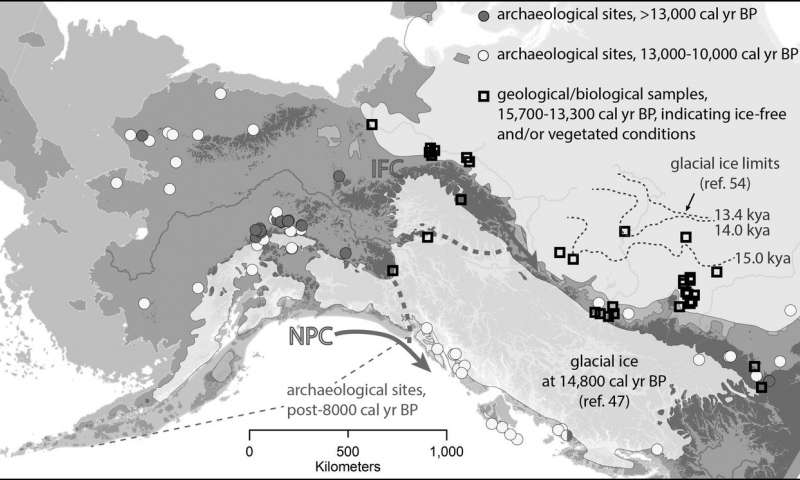Migration routes into the Americas from Siberia are discussed in a new paper in the journal Science Advances (August, 2018) – see https://phys.org/print453017515.html … The idea of a land route between the Cordillera ice sheet (along the western mountain ranges) and the main ice sheet (further east) went out of focus a couple of decades ago. It seems it is now back on the agenda and people may have migrated along the coast – and on a route between the ice sheets thought to have covered a good deal of northern America. Of course, if the main ice sheet was much smaller than allowed and mainly confined to NE north America, it would be something wider than a corridor (it would cover most of Alberta and parts of Saskatchewan). It all revolves around evidence of turbulent water flow (as in a rapidly melting ice sheet) and glacier advance – both of which are able to shift erratics and gouge out the landscape, scraping or washing out sedimentary layers. Rapid ice melt would have produced lots of water – and water flows (and follows the gradient). Glacial advance heaves sediments and erratics before it – at the snout of the glacier. One can see this process in Europe and in North America – but was there an ice sheet that covered the northern hemisphere as a whole or has the polar circle shifted and the Arctic cold zone moved. Does this explain the sharp uptick in warmth in Greenland ice cores?
Getting back to the study, after introducing some catastrophist thoughts on the subject, the authors think it is possible to think in terms of two routes – rather than preferring one over the other. Is this pragmatism or has evidence of a land route been found. You will have to read the full article to find out – but they appear to have a more logical solution to that of the rival claims that stunt the debate. One has to bear in mind that they are thinking in terms of a migration around 16,000 years ago and this may be itself challenged by future archaeological discoveries. This date is around the end of the Late Glacial Maximum – not the best place to locate a migration when there was a lot of water and melting ice flowing around.

